Abstract
Preincubation of wheat (Triticum aestivum L. Thell.) seedlings in a nutrient solution containing low doses of aluminum (0.5 microgram per milliliter for tolerant cultivar Atlas 66 and 0.1 microgram per milliliter for the sensitive cultivar Grana) enabled substantial root regrowth of varieties grown in a lethal aluminum concentration, despite an increased accumulation of aluminum in root tissue of the pretreated seedlings. The distribution of aluminum in the subcellular fractions remained unchanged. The increase in tolerance was completely abolished by the addition of cycloheximide. Aluminum ions at sublethal concentrations significantly increased the incorporation of [14C]valine and [3H]thymidine in roots. The possible role of the synthesis of the inducible aluminum binding protein in the mechanism of aluminum tolerance is discussed.
Full text
PDF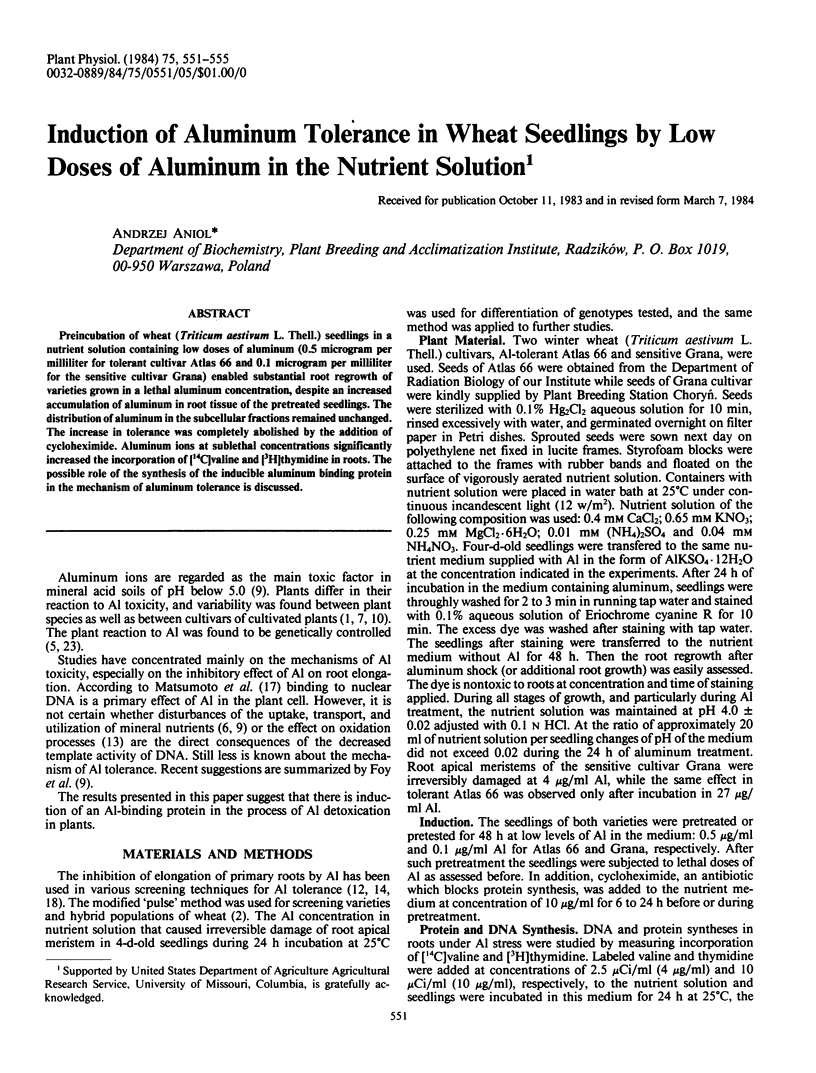
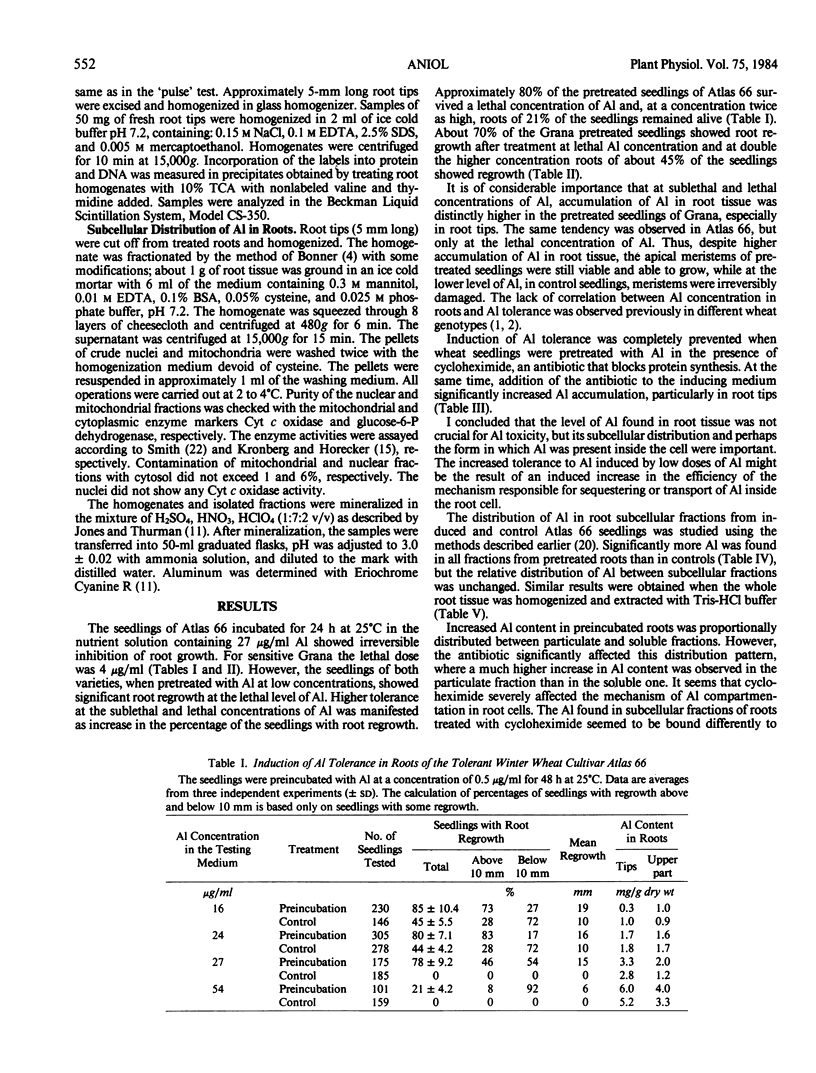
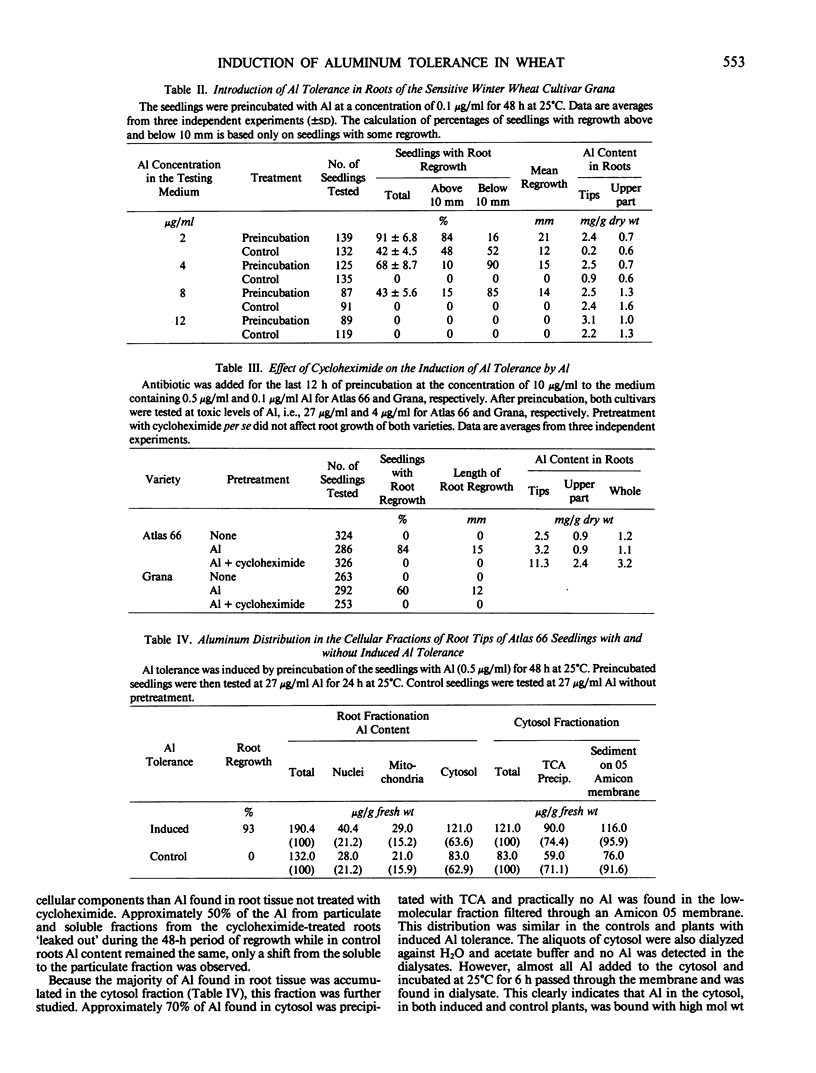
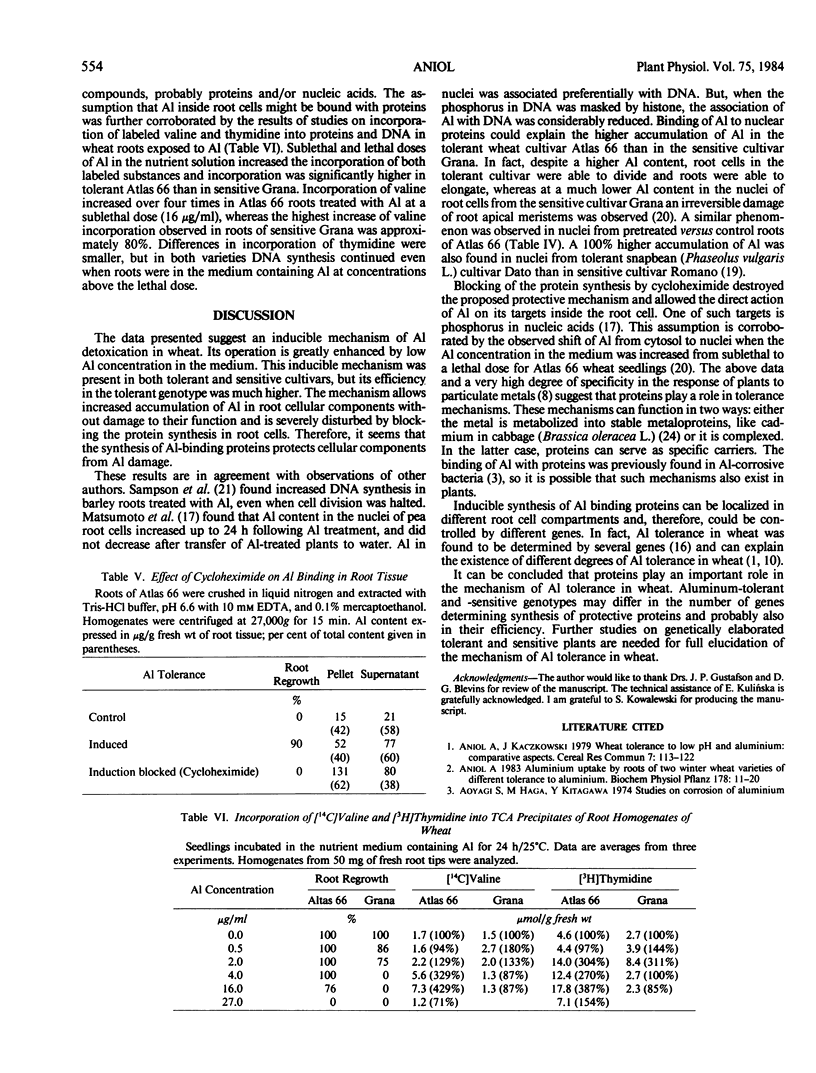
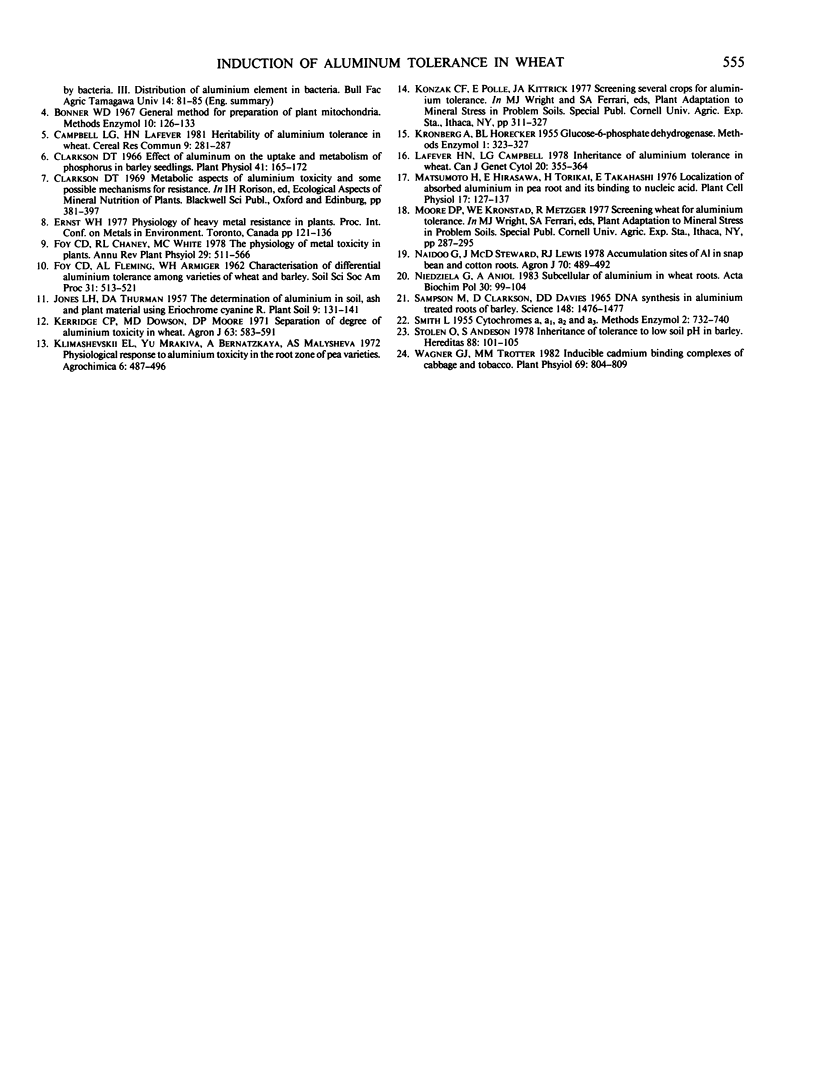
Selected References
These references are in PubMed. This may not be the complete list of references from this article.
- Clarkson D. T. Effect of aluminum on the uptake and metabolism of phosphorus by barley seedlings. Plant Physiol. 1966 Jan;41(1):165–172. doi: 10.1104/pp.41.1.165. [DOI] [PMC free article] [PubMed] [Google Scholar]
- Niedziela G., Anioł A. Subcellular distribution of aluminium in wheat roots. Acta Biochim Pol. 1983;30(1):99–105. [PubMed] [Google Scholar]
- Sampson M., Clarkson D., Davies D. D. DNA Synthesis in Aluminum-Treated Roots of Barley. Science. 1965 Jun 11;148(3676):1476–1477. doi: 10.1126/science.148.3676.1476. [DOI] [PubMed] [Google Scholar]
- Wagner G. J., Trotter M. M. Inducible cadmium binding complexes of cabbage and tobacco. Plant Physiol. 1982 Apr;69(4):804–809. doi: 10.1104/pp.69.4.804. [DOI] [PMC free article] [PubMed] [Google Scholar]


